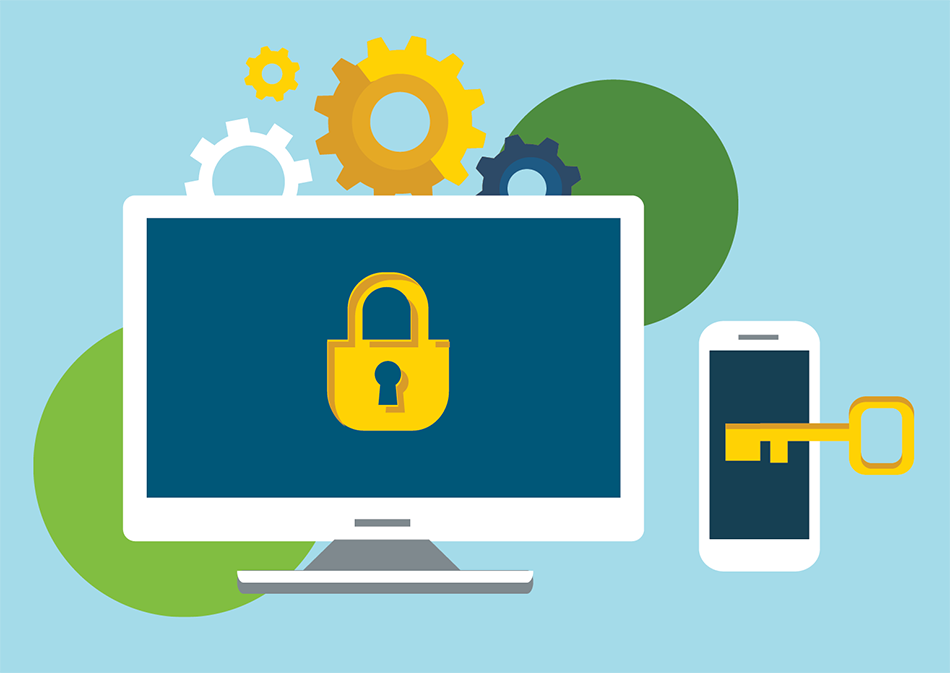When your office migrates to a remote workplace, you have new cybersecurity and physical security challenges to overcome.
In an on-premise workplace, a firewall typically protects your network and devices. You also may have an in-person IT team or a managed IT service provider who handles your on-premise cybersecurity. In a remote workplace, it isn’t easy to manage and protect all devices since they’re distributed across many networks and personal connections. Individual users have much more responsibility when it comes to keeping devices safe; however, cybersecurity tools are available to help protect your business from cyberattacks.
Cybersecurity and physical office security can be a challenging new hurdle for businesses working remotely. With the proper tools and facts, you can better protect your business.
8 Tips for Securing Your Business In a Remote Work Environment
1. Maintain firewalls
The people perpetrating cyberattacks are generally pretty smart. As many businesses make the switch to remote work, protecting on-premise networks and equipment gets put on the back burner in favor of focusing on the remote workforce. Hackers can use this distraction to their advantage.
Remote workplaces often have on-premise technology that’s accessed by devices remotely. Using a VPN, users connect to the on-premise network to access company files and data. A firewall is critical for securing these resources on-premise.
Firewalls ensure only the approved traffic can access your on-premise network. If your on-premise firewall becomes out-of-date, malicious users can penetrate security flaws and gain access to your business’s essential resources.
2. Run anti-virus scans
Anti-virus does a great job of protecting your technology by searching for, detecting, and removing computer viruses, especially when all your devices are being actively monitored on an internal, on-premise network.
Definition-based anti-virus works by comparing files, data, etc. to a list of pre-defined viruses. It only works if you run scans, and if the program knows what’s “bad” when it’s running the scan. You need to continuously update the anti-virus program, so it’s aware of new threats.
3. Protect your endpoints
An endpoint is any device that communicates with your network.
In a remote work setting, your individual endpoints need to be just as well protected as your on-premise network and devices, using firewalls, definition-based anti-virus, and behavior-based endpoint detection and response (EDR).
4. Install EDR
Endpoint detection and response (EDR) monitors your devices and network in real-time to detect cyberattacks, isolate infected machines, alert administrators, and remove cyberthreats.
EDR works by monitoring your network’s endpoints in real-time. Using advanced technology capabilities to analyze data and files, EDR recognizes system behavior anomalies before a cyberthreat affects your entire system. Once a device has been infected, EDR quarantines it and notifies the system administrator that a cyberattack has been detected.
5. Assess your website security
 With an influx of companies working remotely, more people are looking for answers and services online. That means more people will be headed to your website to find information about your company and view your products and services.
With an influx of companies working remotely, more people are looking for answers and services online. That means more people will be headed to your website to find information about your company and view your products and services.
For best results, you want a safe, fast, easy-to-find, and easy-to-use website. Hacked websites suffer in all these categories. If you have questions about website security and search engine optimization (SEO), we can help.
6. Don’t forget about on-premise physical security
Empty offices filled with technology and equipment are ripe for the picking if left unsecured. If no one is regularly in the office, you need to make sure it’s physically secured.
Surveillance systems can help you monitor and record what’s going on in the office. Modern surveillance systems allow you to view cameras from anywhere, on any device. Additionally, access control systems can help you lock down entryways and monitor who’s in the office.
7. Keep your backups up-to-date
Backing up your company’s vital information and data is essential for any cybersecurity plan, whether it’s remote, on-premise, basic, or advanced. Having a backup plan can save your business’s important information in the event of a natural disaster, cyberattack, hardware failure, file corruption, robbery, or human error.
In addition to keeping your backups up-to-date, be sure to test them often.
8. Educate Your Users
For cybersecurity to be successful in a remote workplace, the people in your company should be educated and informed of cybersecurity best practices. Cybersecurity works best when everyone is on the same page.
As an easy first step, you can share this blog and information with your employees and coworkers.
Do You Have Questions About Cybersecurity? High Touch Can Help.
High Touch specializes in constructing comprehensive security solutions to help keep businesses safe. To learn more about Cybersecurity, Website Security, Surveillance, or Access Control services, fill out a contact form on our Get In Touch page.

